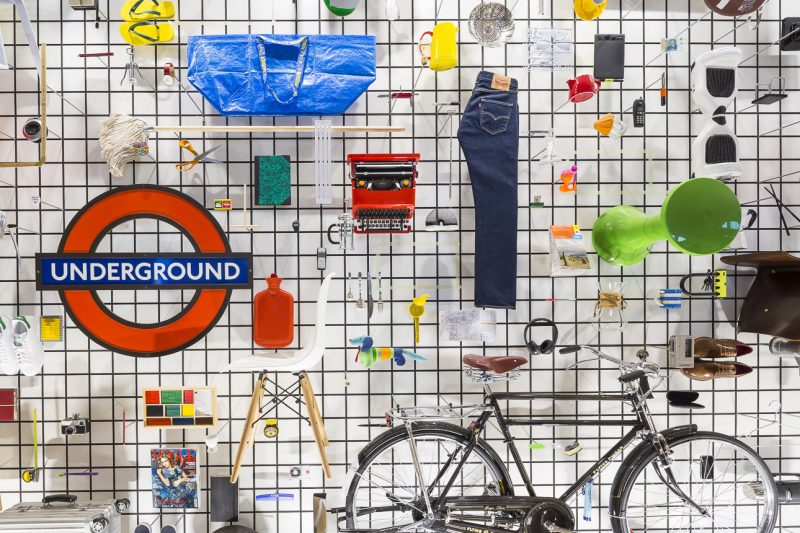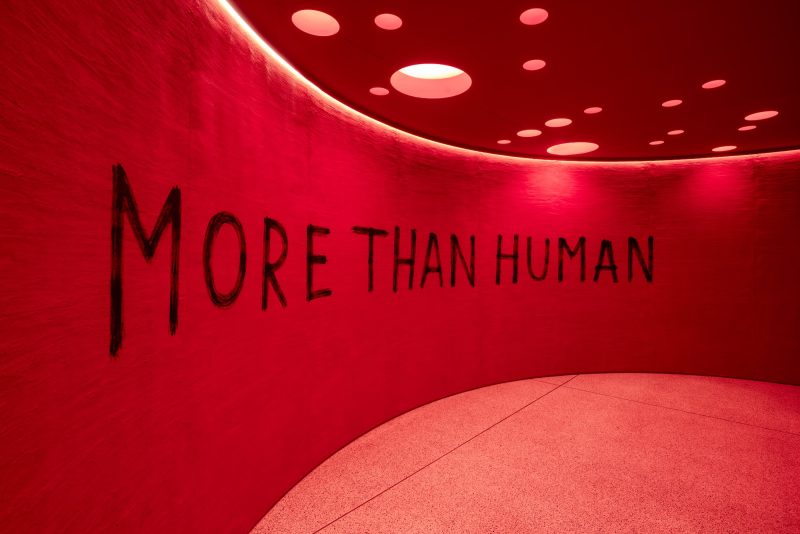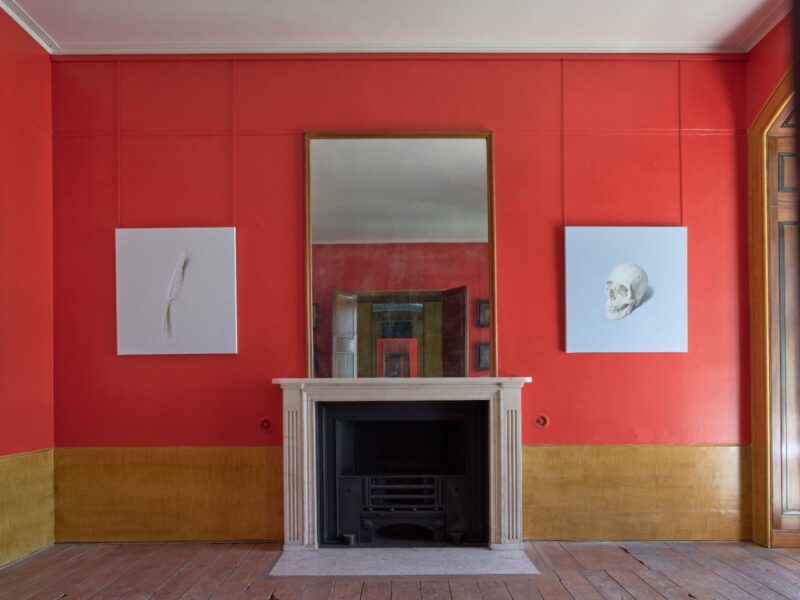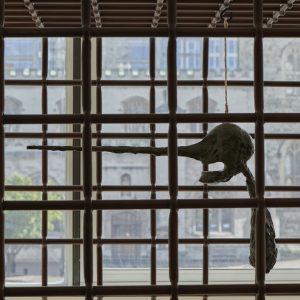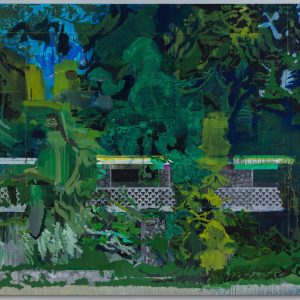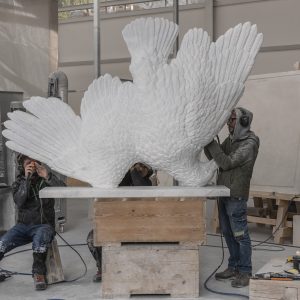The Design Museum today unveiled a major public commission that uses folktales and a new collection of emoji to examine humanity’s relationship with the natural environment.

Fables for our Time is a new 15m triptych on the museum’s second floor. It features three panels, each of which tells a particular story about an ecosystem that is vital to a thriving planet: the ecosystems of bees, coral and mushrooms. The three scenes are presented as contemporary folktales, with narrators in the foreground who advocate for the primacy of natural systems in the human story. On view from today and free to experience, the panels consist of 176 constantly rotating prisms. They have been created by architecture and design studio Space Popular (Lara Lesmes and Fredrik Hellbergin) in collaboration with architectural historian Shumi Bose.
Visitors are invited to contemplate the installation from different vantage points within the museum, and to think about how humans are entangled with the natural environment in ways that are both healing and harmful. The closer the viewer, the more the triptych reveals. Conceived as a piece of visual research and communication, the work has been commissioned by Future Observatory, the Design Museum’s national research programme for the green transition.
Fredrik Hellberg, Lara Lesmes, and Shumi Bose, said:
We chose folktales as the core of this commission because they have long acted as a means to share cautionary tales. And the climate crisis is, in a way, a crisis of storytelling as it is hard to convey the immensity or scale of ecological change. The twenty-first century needs a new set of fairy tales to imagine how we might design today’s planetary possibilities together.
It marks a major new research theme at Future Observatory, which is exploring ‘more-than-human design’ as a way to reconnect to other species and the ecosystems that keep the planet healthy. The theme will play out across funding grants, Future Observatory Journal and a major exhibition in 2025.
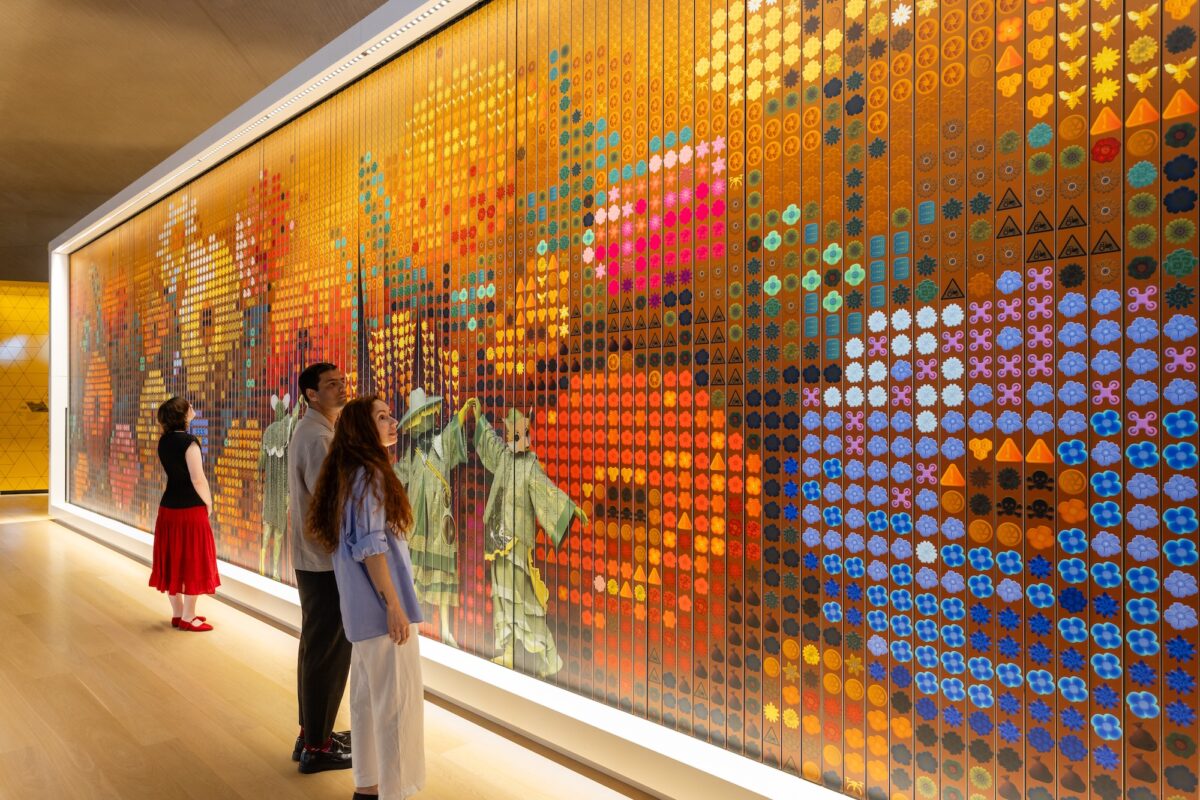
The triptych has been made possible through funding from the Arts and Humanities Research Council, part of UK Research and Innovation. The work is a striking addition to the museum’s iconic atrium space, and it sits within the Future Observatory display space and alongside the permanent collection gallery Design Maker User. Each of the panels in Fables for our Time is made up of hundreds of emoji in a mosaic-like pattern, or a pixellated form of cross-stitch embroidery. The emoji represent both natural systems and human ones, from cells and species to pesticides and waste. There is insect, plant and marine life alongside batteries, cigarette butts and Wi-Fi symbols. All have been designed specially for this commission.
Justin McGuirk, Future Observatory’s director, said:
The green transition is a core part of the Design Museum’s mission, and it’s not just about carbon emissions, it’s about reconnecting to the living world. The stories we tell are central to that reconnection, and Fables for our Time puts natural systems at the heart of the museum. It is such a rich work of graphic communication that encourages visitors of all ages to contemplate the role of other species in humanity’s story. The work is so detailed that the more you engage, the more it reveals. It is stunning, and we are thrilled that hundreds of thousands of visitors will get to enjoy it for free.
The first frieze shows an expanse of flowers, representing the work of bees, the crucial pollinators who cooperate with flowers to help them reproduce. The next panel shows a coral reef that is being maintained by a group of divers. Then the final panel shows the world of mushrooms, and their root networks, which are called mycelium.
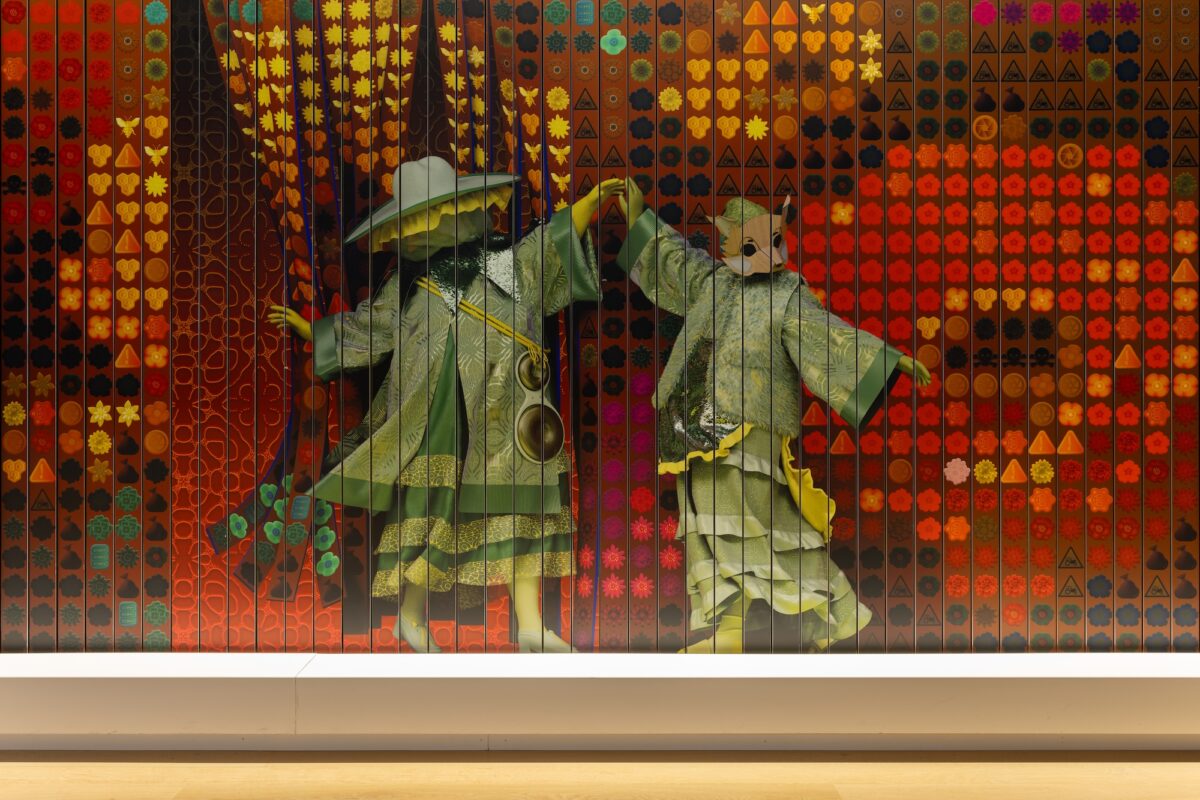
Animating each frieze are the storytellers, who appear in the foreground and narrate or perform stories about their ecosystems. By wearing animal masks, they embody non-human actors in their tales: a fox, a mouse, a turtle, an axolotl.
Fables for our Time is now open at the Design Museum and is free to visit.
